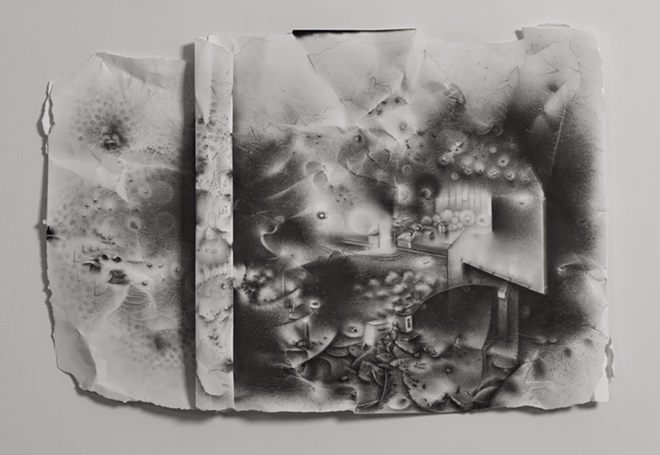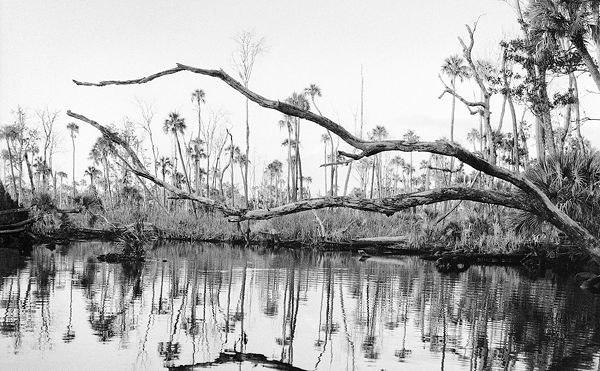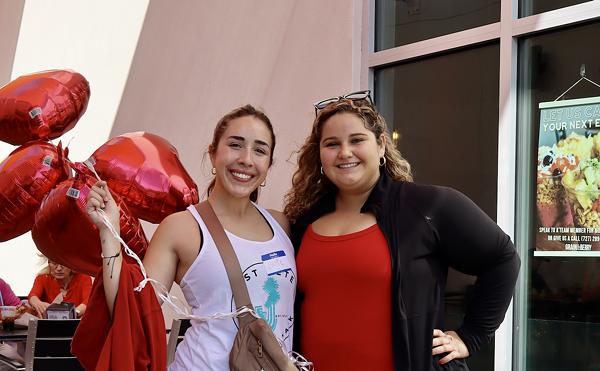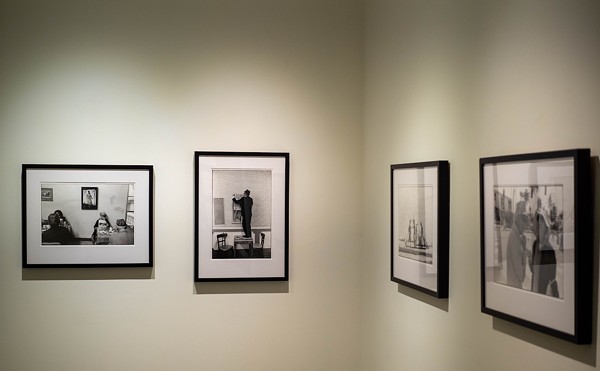
The Dunedin Fine Art Center is far enough along in its $1.2 million renovation that visitors can start to see the results. Earlier this summer, four new studio art classrooms and a third exhibition gallery opened at the art center, where a build out of its brand new second floor will yield another six classrooms by spring of 2016. The expansion to 31,000 square feet now, and 38,000 by completion of the project, has been fueled by DFAC’s ever-growing art education program, which serves 2,000 school children during the summer and a mix of adults and children throughout the year.
In the meantime, DFAC, through its curator, Catherine Bergmann, continues to organize reliably good exhibitions that bring together artists who live in Tampa Bay and artists from outside. One of the art center’s current offerings is Poetics of Space, a four-person painting and drawing show that draws inspiration from a book of the same title by French philosopher Gaston Bachelard, who investigated how constructed spaces shape human feeling and lived experience.
The sentimental favorite in the exhibition is Mernet Larsen, a retired University of South Florida art professor who is fervently admired by local followers of art (myself included), artists and former students. Since her departure from teaching, Larsen’s career has gotten a boost. In 2012, at the age of 72, she had her first New York gallery exhibition at Johannes Vogt — in fact, a three-part show that stretched over two months — with positive reviews from critic Roberta Smith in The New York Times, among others. In December of last year, the gallery published a related monograph (a book devoted to Larsen’s work), which DFAC handily offers visitors an opportunity to flip through in the exhibition.
Five of Larsen’s recent paintings, which characteristically depict banal social interactions in spaces of disconcerting geometrical form, are included. One, titled “Explanation,” in which a figure extends her arm to make a point, illustrates a staff meeting — but the ordinary spatial order of the setting appears inverted, with blocky, angular people seated at a classroom table that levitates beneath a gray sky of linoleum tile (upon which the table could also be resting, depending on how you read the space, or spatial possibilities, that Larsen has created inside the painting). Another, more on the metaphysical side, shows a group of figures navigating a dirt road in a landscape, including a man who emerges from, or perhaps disappears into, a black rectangular trap door embedded in the earth.
The finest of these is “Reunion.” The painting depicts a curiously strained meeting at a pizzeria, where five old friends come together but remain psychologically distant. Larsen renders the scene, from a red-checkered table that bends in space to show each diner from a slightly different perspective to a primitive statuette overlooking the scene from a niche in the restaurant wall, with subtle wit and a keen appreciation for the surreality of reality.
The exhibition also includes paintings by Leslie Lerner, the Ringling College of Art and Design instructor who died in 2005 but is remembered as one of the area’s best painters. (His works are included in local collections at the Tampa Museum of Art and the Ringling.) Lerner’s two landscapes in the show have a disenchanted fairy tale quality, depositing a recurring figure of a young man into a romantic but inhospitable landscape of craggy rocks and a mountain fortress. A grouping of small canvases by Brooklyn-based Elizabeth Huey adds punches of color and the energy of more quickly, loosely painted domestic and outdoor scenes, including the electric orange sunrise of “Terrace at Dawn.”
But the exhibition’s real revelation, other than Larsen, is a series of virtuosic charcoal drawings by Charlotte Schulz, another Brooklynite and a graduate of USF’s MFA program in 1993. Faintly suggestive of maps, the drawings present radically deconstructed landscapes that spill, flow and grow like fungus out of ruptured interior spaces drawn by Schulz and across the folds and bends that she makes in her paper. Playing with perspective and scale, and the capacity of charcoal to create smoky, indeterminate shapes as well as crisp lines, Schulz keeps a viewer perpetually guessing: Is this another world or a place inside the mind? It is possible to voyage with the eye through her unfurling spaces for minutes on end and still not know where you have been, only that wherever you are is exquisite.
Runs through Aug. 17, Dunedin Fine Art Center, 1143 Michigan Blvd, Dunedin, 727-298-3322, dfac.org.















